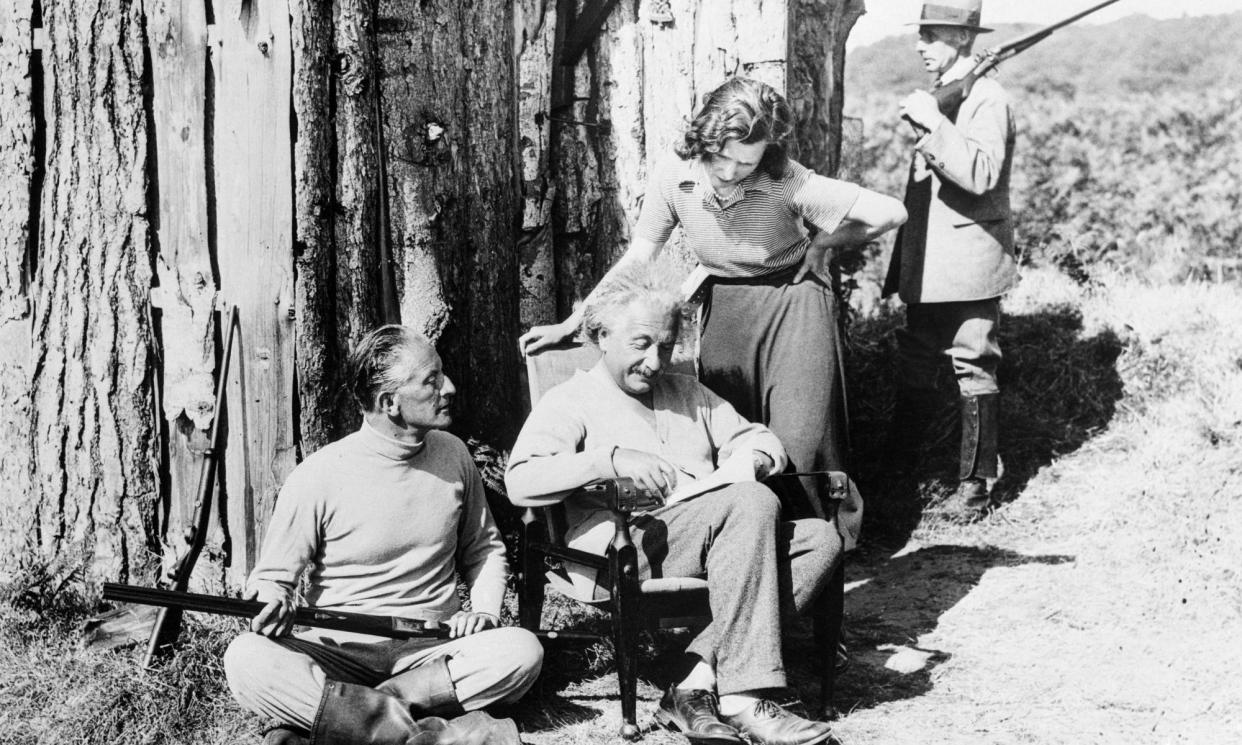Einstein on the run: how the world’s greatest scientist hid from Nazis in a Norfolk hut

In September 1933, a humble wooden hut on a secluded Norfolk heath became the improbable location of one of the most important hideouts in history.
Nearly a century later, the rarely told story of the three weeks Albert Einstein spent holed up in a heathland bothy, on the run from Nazi assassins, has been turned into an unusual type of docudrama.
Using Einstein’s own words, Netflix’s Einstein and the Bomb will shine a light on how the celebrated German Jewish scientist’s brief sojourn on Roughton Heath came at a crossroads in his life – and, consequently, changed the course of history.
“It was only as we looked closer that we realised quite what a seismic moment in his life it was,” said the screenwriter Philip Ralph, a “verbatim specialist” who used only Einstein’s actual speeches, letters and interviews to script the theoretical physicist’s dialogue.
“What came out from my research was that it was, in many ways, the most important turning point in Einstein’s life.”
By then, Einstein was public enemy No 1 in Germany. In May 1933, a brochure entitled Jews Are Watching You accused Einstein of “lying atrocity propaganda against Adolf Hitler”. Under his picture, it stated: “Not yet hanged.”
In September, after German secret agents assassinated the Jewish philosopher Theodor Lessing in Czechoslovakia, the Nazis – who had already stolen Einstein’s savings, raided his summerhouse, ransacked his Berlin apartment and taken his violin – offered a reward of at least £1,000 for his murder.
The next day, Einstein yielded to his wife Elsa’s pleas to leave her in the holiday home they had been renting near Ostend in Belgium and flee to England by sea. He would never set foot on continental Europe again.
“Prior to that point, Einstein had been an avowed, passionate advocate for non-violence and pacifism. But at the end of that three weeks, he gave a speech to 10,000 people at the Royal Albert Hall where he effectively said there is an existential threat to European civilisation, and we will have to fight it,” said Ralph.
In 1939, fearing that the Nazis would get there first, he successfully petitioned President Franklin Roosevelt to accelerate the US development of a nuclear bomb, a decision recently depicted in Christopher Nolan’s blockbuster film Oppenheimer.
It was during Einstein’s stay on the remote heath, protected by armed guards, that he first came to the realisation that he must publicly use his influence in society to speak out against the Nazis and call on world leaders to act, Ralph said. “We chose the title Einstein and the Bomb because it was the shift in his thinking that took place over that three-week period in Norfolk that directly led him to put his name to that letter to Roosevelt.”
The small Norfolk bothy belonged to a trusted acquaintance, the anti-fascist Conservative MP and first world war naval commander Oliver Locker-Lampson, who offered it to Einstein as a place of refuge under his protection.
Earlier that year, Locker-Lampson had highlighted Einstein’s situation in parliament and introduced an ultimately unsuccessful private member’s bill to “extend opportunities of citizenship for Jews resident outside the British empire”.
Perhaps to draw attention to Einstein’s plight, members of the press were somewhat incongruously invited by Locker-Lampson to the secret hideout and allowed to interview and photograph the famous Nobel prizewinner.
It was a press call that, given the very real threat to Einstein’s life, appalled a reporter at the Observer. “England is not a very good place to hide in,” the newspaper’s diarist reported on 17 September 1933. “Dr Einstein, who has come here to escape Nazi persecution, finds his wooden hut photographed in the papers, with full indications of locality, and Cromer Council considers the question of presenting an address. Germany, I suppose, is presumed to be looking the other way.”
When Einstein agreed to give the speech at a ticketed event at the Royal Albert Hall to raise money for Jewish academic refugees from Germany, his decision was criticised by the Daily Mail. The editorial, which claimed to pity and “have every sympathy with the German Jews as such”, called on Einstein to “stop this injudicious agitation in this country against the Nazi regime”.
Two days after giving his historic speech, calling on all nations to “resist the powers that threaten intellectual and individual freedom … which our forefathers won through bitter struggle”, Einstein left for the US and the newly formed Institute for Advanced Study in Princeton University. Elsa successfully joined him en route and he spent the rest of his life in exile, where he wrote affidavits recommending the US offer visas for Jews fleeing Nazi persecution and helped to found the world’s first refugee aid agency, the International Rescue Committee.

 Yahoo News
Yahoo News 
